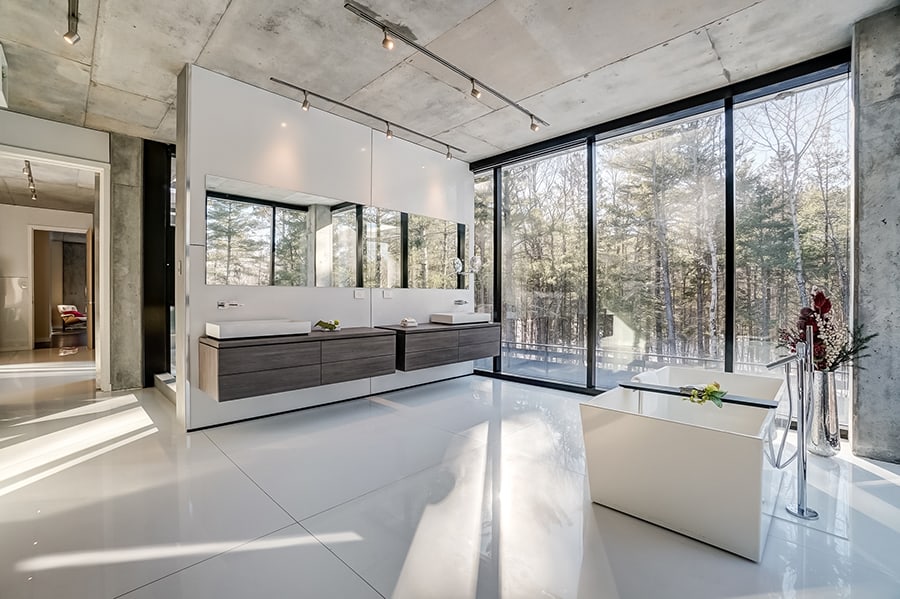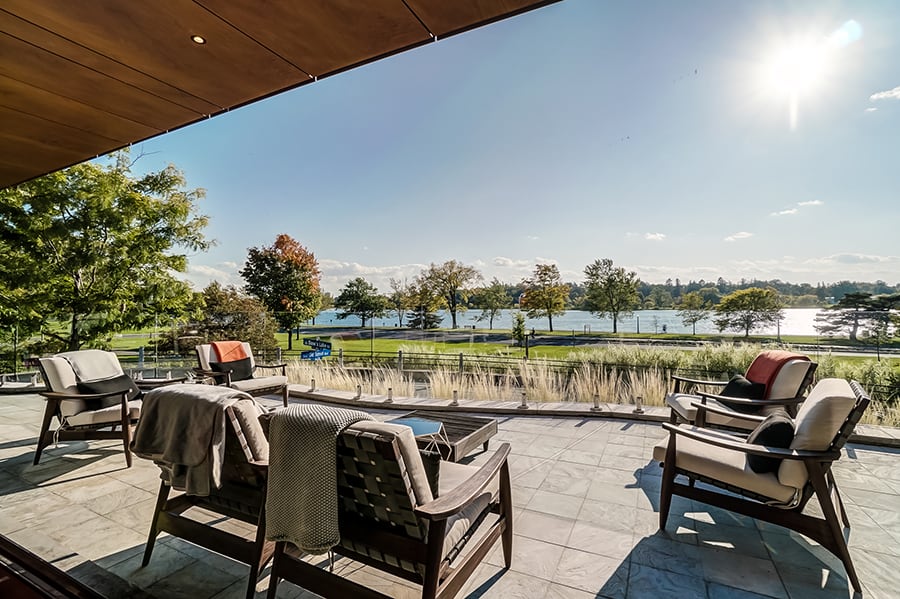By Reba Wilson
Photos: DreamProperties.com

In the past year, many people have reflected and changed aspects of their lifestyles. One of the things first to be embraced was a newfound appreciation for personal space and privacy.

THE DIMENSIONS OF PRIVACY
There are distinct layers of privacy that have become more pronounced over the past year. Privacy is an intangible privilege and it has become the new luxury good.
As a result of the pandemic, we have all become familiar with intra-family privacy: our own bubbles. This is one kind of privacy—social distancing from other families through space. Intra-family privacy has been one of the key drivers in Ottawa’s robust luxury real estate market since the outbreak of COVID-19. The trends towards rural living, acreage, waterfront and water-view properties and larger spaces have been a direct result of the need to distance from others. We have also seen some families upsizing, moving into larger dwellings to accommodate returning generations, including grown children.
Amenities-driven spaces have also been in high demand. With so much time being spent at home, being entertained within the confines of home has become imperative. This is another reason view properties and homes with lush gardens, terraces and pools have been sought after. Enjoying one’s space and keeping family members (especially young children) entertained are key.
That being said, privacy within one’s family unit is another important dimension of privacy, and one that is established through delineating spaces. With so many people working from home and spending more time surrounded by their families, we have found the need to distinguish this level of privacy. The trends of self-care and diminished screen time are both nods to such privacy. It is as simple as this: we are constantly surrounded by our families in our homes and require our own personal space to make Zoom calls, work out, meditate, read or simply relax.

HOW TO ACHIEVE PRIVACY
Privacy is achieved through perception, developing physical and environmental boundaries, and one’s own thinking. In real estate, there are distinct categories of privacy: situational, topographical and architectural or design-based.
Such categories can be applied to all types of property, from homes to condos to office spaces. Situational privacy involves location. A corner or end unit in a condo may benefit from views and less hallway foot traffic. A home on a cul-de-sac may have fewer passersby. Within the space there are also layout-induced elements of privacy. Many homes feature front-facing entertaining rooms with family areas, like the kitchen, tucked towards the backyard. Others may separate principal rooms from a bedroom wing. Front doors to condos sometimes open into a foyer wall instead of directly into the living space.
Privacy can also be topographical, where built-up land and homes at the top of a hill might afford higher discretion. Fencing and landscaping are ways the topography might be enhanced to increase privacy.
Interior privacy is accomplished at two stages: the time of building or renovation and then again through further design touches. Choices like quality of insulation, window placement and room positioning, all determined at the outset of the process, affect the ultimate privacy of the home. A spa-like bathroom overlooking a forest might feature floor-to-ceiling views to be enjoyed from a soaking tub, while a feature window placed in the same spot in an urban bathroom would not have the same effect. Both might offer privacy, but the urban bathroom would only achieve this through window treatments.
Privacy might also be a by-product of healthy acoustics. At a fundamental level, the way sound travels is influenced in part by the shape of the room, ceiling finishes and height, the ratio of hard to soft surfaces and wall placement.
It is not to say that privacy is necessarily invoked by walls and barriers, though on a basic level it is. As privacy is personal and experiential, an open concept layout may offer elements of privacy for some. Perhaps such a feeling of privacy would be tied to unobstructed views or a large format floorplan. It might also have to do with two co-habitants each having their own work-from-home space. Clever ways to add to the perception of privacy may include installing a half wall between rooms or using curtains or screens. West Elm, CB2 and other furniture retailers have helped bring screens back into fashion of late. In smaller spaces that don’t offer great physical distance, increasing the volume with high ceilings will maximize the feeling of privacy.
Privacy is, after all, a feeling. That is perhaps why it’s so relevant these days; privacy can contribute to an overall sense of well-being. It is the feeling of freedom—living in the moment, taking time for oneself or developing one’s own space, be it figuratively or physically. Privacy is indeed the new luxury.
